#vogue ballroom
Text
Mekhi Cuffee: "A 1 night special. LIKE A FEM QUEEN. It’s the little things. Get in. #vogue"
Source
#music#edm#house music#dance music#electronic music#instagram#vogue ballroom#vogue dance#vogue fem#voguing#vogue#ballroom culture#ballroom scene#ballroom#dancer#dance#lgbtq#gay#queer#trans#nonbinary#black queer#black lgbt#black gay#black nonbinary#black trans#ota#open to all
81 notes
·
View notes
Photo

House of Muscle - Hamidiu Banor by Baldovino Barani x FACTORY Fanzine
#rufskin#hamidiu banor#baldovino barani#factory fanzine#house of muscle#voguing#vintage#80s#beauty#queer#fanzine#willi ninja#ballroom#new york#harlem
2K notes
·
View notes
Text
Daesja (Jourdan) Mizrahi 10s
FQ Performance, Chanel Ball [NYC, 2001]
Source: Sugarchampagne
206 notes
·
View notes
Text


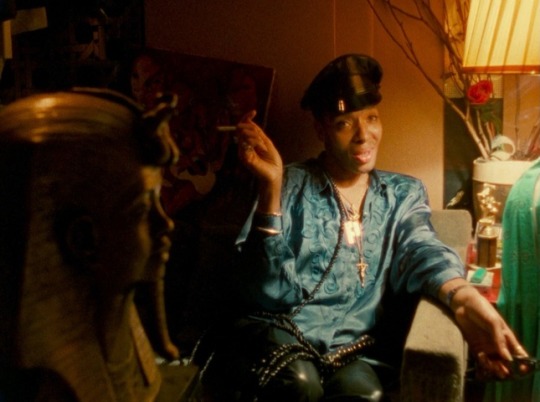


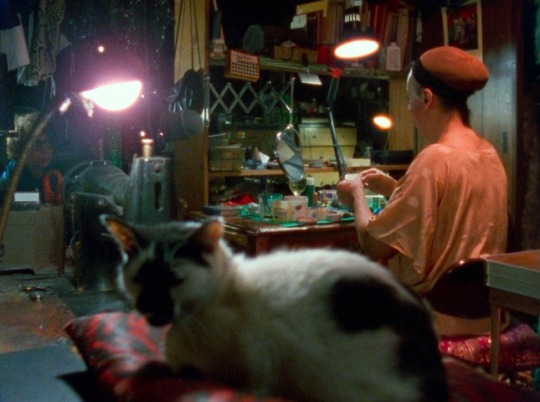


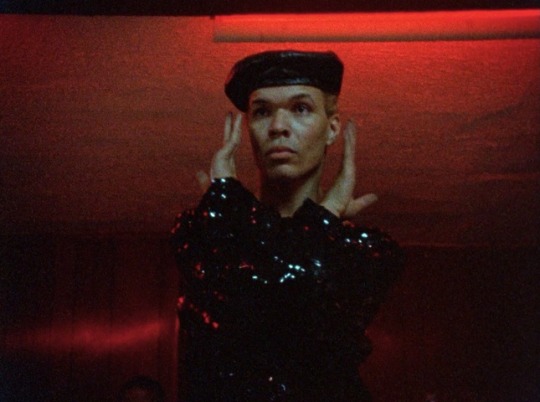
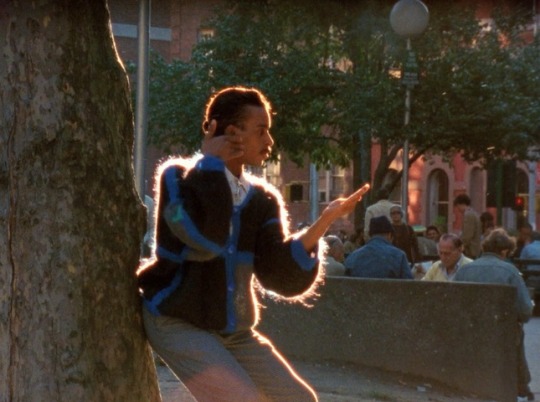
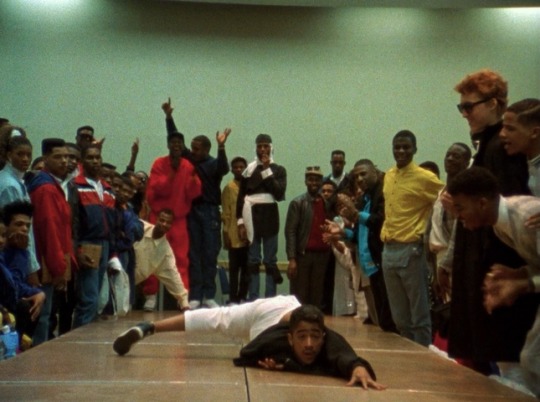





Paris Is Burning (1990)
Director: Jennie Livingston
Cinematography: Paul Gibson
843 notes
·
View notes
Text

CUNTY.
#beyonce#beyonce knowles#music#blue ivy#celebrities#queen bey#beyonce giselle knowles#renaissance#jay z#rnb#singer#icon#legend#pop#fashion#celebs#ballroom#vogue
162 notes
·
View notes
Text

Willi Ninja and an unknown dancer voguing at Mars nightclub in New York City | 1988
ph: Catherine McGann
257 notes
·
View notes
Text

O'Shae Sibley ballroom memorial, Brooklyn, NY, 2023
GIF: Bruce Morrow
#bruce morrow#brucemorrow#bruce-morrow#animated gif#digital art#animated gifs#nft digital art#the moment that#my art#myart#oshaesibley#Brooklyn#gifs on tumblr#animated gifs on tumblr#dancers#lgbtq#black lives matter#Vogue#ballroom#honey balenciaga#beyonce
57 notes
·
View notes
Text

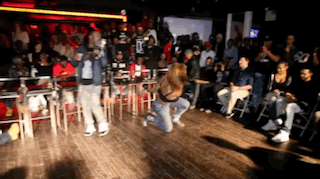
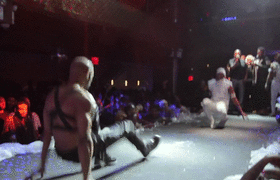
12 notes
·
View notes
Text




Vogue Nights at Club Silver 1/12
#voguing#ballroom#ballroom culture#lgbtqiia+#lgbtq community#drag queen#american traditional#tattoos#tattoed girls#indie#indie sleaze#photography#photoshoot#digital camera#mermaid motel#35mm film#kodak easyshare#drag artist#80s aesthetic#80s photography#10s across the board#candid#candid photography
18 notes
·
View notes
Text

Gravity Jacobs
85 notes
·
View notes
Text
#vogue#vogue battle#vogue ballroom#vogue dance#voguing#ballroom dance#ballroom#butch queen#fem queen#trans#gay#black trans#black gay#queer#lgbt#lgbtqia#black queer#dance music#electronic music#house music#edm#tiktok
115 notes
·
View notes
Photo
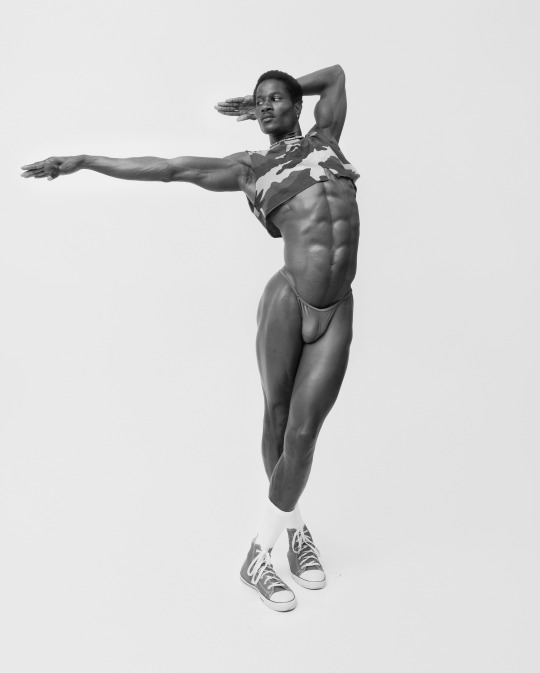
House of Muscle - Hamidiu Banor by Baldovino Barani x FACTORY Fanzine
#hamidiu banor#baldovino barani#factory fanzine#house of muscle#vintage#80s#ballroom#voguing#beauty#queer#fanzine#rufskin#willi ninja#harlem
2K notes
·
View notes
Text
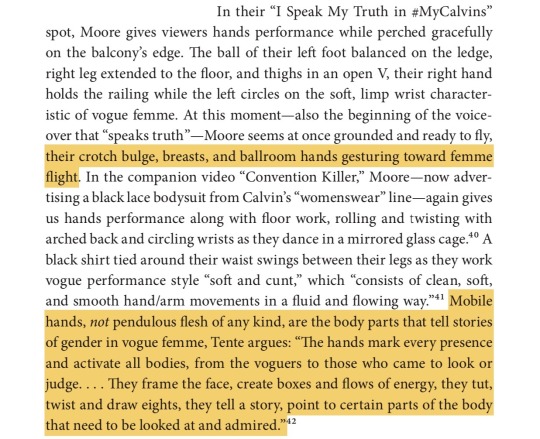
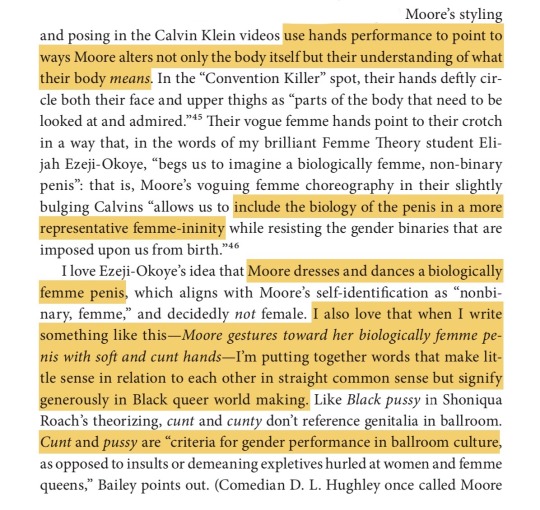


Omise’eke Natasha Tinsley on Indya Moore’s Calvin Klein ads, ballroom hands as gender performance, & imagining + valorizing femme penis
image description: four cropped screenshots of text from The Color Pynk: Black Femme Art for Survival by Omise’eke Natasha Tinsley.
excerpt 1:
In their “I Speak My Truth in #MyCalvins” spot, Moore gives viewers hands performance while perched gracefully on the balcony’s edge. The ball of their left foot balanced on the ledge, right leg extended to the floor, and thighs in an open V, their right hand holds the railing while the left circles on the soft, limp wrist characteristic of vogue femme. At this moment—also the beginning of the voiceover that “speaks truth”—Moore seems at once grounded and ready to fly, their crotch bulge, breasts, and ballroom hands gesturing toward femme flight.
In the companion video “Convention Killer,” Moore—now advertising a black lace bodysuit from Calvin’s “womenswear” line—again gives us hands performance along with floor work, rolling and twisting with arched back and circling wrists as they dance in a mirrored glass cage. A black shirt tied around their waist swings between their legs as they work vogue performance style “soft and cunt,” which “consists of clean, soft, and smooth hand/arm movements in a fluid and flowing way.”
Mobile hands, not pendulous flesh of any kind, are the body parts that tell stories of gender in vogue femme, Tente argues: “The hands mark every presence and activate all bodies, from the voguers to those who came to look or judge... They frame the face, create boxes and flows of energy, they tut, twist and draw eights, they tell a story, point to certain parts of the body that need to be looked at and admired.”
excerpt 2 (images 2 & 3):
Moore’s styling and posing in the Calvin Klein videos use hands performance to point to ways Moore alters not only the body itself but their understanding of what their body means. In the “Convention Killer” spot, their hands deftly circle both their face and upper thighs as “parts of the body that need to be looked at and admired.”
Their vogue femme hands point to their crotch in a way that, in the words of my brilliant Femme Theory student Elijah Ezeji-Okoye, “begs us to imagine a biologically femme, non-binary penis”: that is, Moore’s voguing femme choreography in their slightly bulging Calvins “allows us to include the biology of the penis in a more representative femme-ininity while resisting the gender binaries that are imposed upon us from birth.”
I love Ezeji-Okoye’s idea that Moore dresses and dances a biologically femme penis, which aligns with Moore’s self-identification as “nonbinary, femme,” and decidedly not female. I also love that when I write something like this—Moore gestures toward her biologically femme penis with soft and cunt hands—I’m putting together words that make little sense in relation to each other in straight common sense but signify generously in Black queer world making.
Like Black pussy in Shoniqua Roach’s theorizing, cunt and cunty don’t reference genitalia in ballroom. Cunt and pussy are “criteria for gender performance in ballroom culture, as opposed to insults or demeaning expletives hurled at women and femme queens,” Bailey points out. (Comedian D. L. Hughley once called Moore a pussy for objecting to his homophobic jokes, to which they responded, “Pussy’s are warm, have depth and are strong enough to take a beating... Pussy is absolutely complimentary to who I am.”) Bailey notes, “When these terms are used, the speaker does not typically say ‘you are a cunt.’ Instead, the speaker says, ‘give me pussy’ or ‘you look cunt,’ meaning give me femininity in your performance and self-presentation.”
In Bailey’s examples, cunt functions as an adjective rather than a noun: and while concrete nouns suggest “permanency, stability, fixity,” as Gloria Wekker writes of Dutch nouns describing sexuality, adjectives—whose semantic role is change, modification of a noun’s meaning—are more supple, more suited to the malleable, unfinished understanding of sex and gender Bailey attributes to ballroom.
Cunty is a descriptor Moore themself uses, as in their tweet about Janet Mock’s work on Pose: “Goddess @janetmock teleported from the universe of infinitely cunty magical stuff and crushed some sugar, some spice and everything transsexual & softly blew the con- tents with her hand using her holy afro futuristic breath unto the book of Pose. & then our cast was born.” Nobody’s cookie-cutter, heteronormative femininity, the infinite cuntiness in Moore’s fabulous description is a femme-ininity that multiplies gender possibilities like grains of sugar, births something new with hands and mouth instead of uterus, and creates beautiful Black femme futures that were never supposed to exist.
excerpt 3:
In a roundtable on colorism, Moore cites white woman cunt—“a phrase in the ballroom scene that is commending somebody that is beautiful”—as proof that decolonization of queer bodies is ongoing, painful, and powerful even in our own spaces. Black femme cunt, Black femme penis as standards of excellence, they know, are “holy afro futuristic” dreams yet to be realized.
end image description.
#femme#voguing#vogue fem#ballroom culture#indya moore#transfeminism#transfem femme#genitalia mention#Omise’eke Natasha Tinsley#quotes#image described#mac’s bookshelf#the color pynk#transmisogynoir#racism#antiblackness#everything goes back to femme#fucking fav
9 notes
·
View notes
Text
Icons Yolanda (Miyake Mugler) Jourdan, Daesja (Mizrahi) Laperla, and Alexis (Ebony) 007
FQ Performance, Clubhouse [NYC, 2000]
Source: Ballroom Throwbacks
10 notes
·
View notes
Text
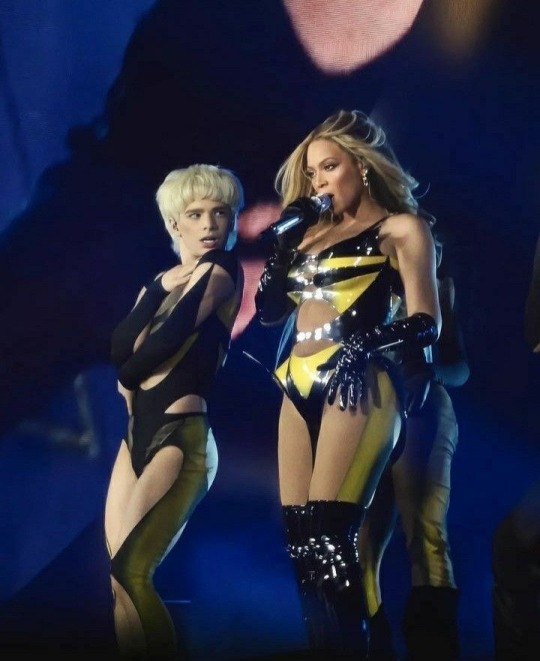
BEYONCÉ & HONEY BALENCIAGA 🪩
#beyonce#beyonce knowles#music#blue ivy#celebrities#queen bey#beyonce giselle knowles#renaissance#jay z#rnb#ballroom#honey balenciaga#vogue#singer#pop#icon#legend#beyhive
122 notes
·
View notes
Text
Paris is Burning: the Fabulous and the Ugly of Queer POCs in the Shadow of NYC
"Ball is like crossing into the looking glass, a wonderland. You go in there and you feel 100% right of being gay."

Directed by Jennie Livingston in 1990, Paris is Burning follows the Ballroom culture that originated in NYC, an underground LGBTQ+ subculture, where African-American, Latino gay men, and transgender folks "walk" in drag and attend performance competitions to win cash prizes and trophies in categories like “Face,” “Femme Queen Realness,” and "Voguing." In the 1980s of New York City, queer POCs were extremely ostracized due to their sexuality and race, they struggled in the dark ghetto of this metropolitan area, while the Ballroom community offered them a shelter to be their authentic selves. Most participants of Ballroom belong to groups known as "houses." Folks could choose their own "mother" and siblings who accept them and love them, for being gay. What's more, Voguing became queer POCs' distinct way of self-expression. Dancers act in different poses, with an emphasis on the movements of arms and body, just like the model on the cover page of the magazine Vogue. And it is all about confidence and self-love. In this sense, Ballroom became an identity celebration of the oppressed, the exiled, and the outcast, where queer folks of color find status, acceptance, and worth.

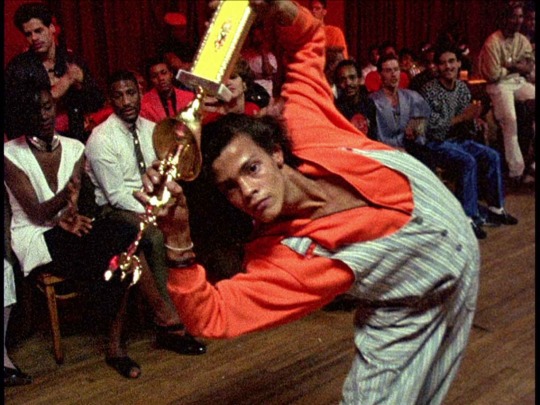
Regarding the documentary itself, I argue that Paris is Burning breaks into the mainstream media with its groundbreaking representation of black gays and trans people of color and its disclosure of the intersectional oppressions faced by queer POCs; however, the representation of "performance competitions" is still constrained in the frame of gender performativity, and the production of it is criticized as an appropriation of Ballroom culture by a privileged white filmmaker.
Here is a trailer to have an overview of this documentary.
youtube
Part 1: About Intersectionality
The biggest message Paris is Burning brings to the table is intersectionality, where it captures black gays and trans people of color as well as their subculture. Queer theory actively acknowledges the importance of queer of color critiques. That is, oppression on various aspects of identity intertwines and compounds together, such as sexuality, gender, race, age, class, and ableness. And each oppressive institution (racism, sexism, homophobia, transphobia, etc.) cannot be examined separately from one another. Queer folks of color are being ostracized and marginalized not only within larger society but also in the queer community, meaning that they face multiple oppressions. And it is true. A gay man of color in the documentary said, "I remember my dad used to say, 'you have three strikes against you in the world. You are black, a male, and you are gay; you are going to have a hard fuckin' time.'"
Tracing back the history of Ballroom culture, we also see the significance of intersectionality through its origin. Black and Latino drag queens used to experience racism in established drag queen pageant circuits. Although participants were racially integrated, the judges were almost all white. Since then, drag queens of color have begun to organize their own pageants, the Ball. In that case, Ball culture becomes a retrospective symbol of the era when queer people of color underwent discrimination from multiple sources.
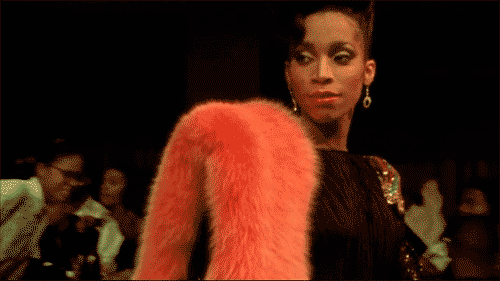
Venus Xtravaganza, a trans woman in the documentary, whose murder reveals the very dark and brutal side of intersectional oppression. Venus, an Italian-American, was saving up money for gender confirmation surgery while earning a living as a sex worker after she was excluded by her family. However, her dead body was found at a hotel on Christmas Day, 1988, during the documentary's shooting. But her killer was never found. In the documentary, she described the experience of being attacked by a man who discovered she was transgender during an intimate encounter. Hence, Xtravaganza's trans identity, multiraciality, homelessness, hustling, poor access to health care, and AIDS — all these aspects layered together contributed to the tragic end of this beautiful life.
Below is a clip about the self-narrative by Venus Xtravaganza.

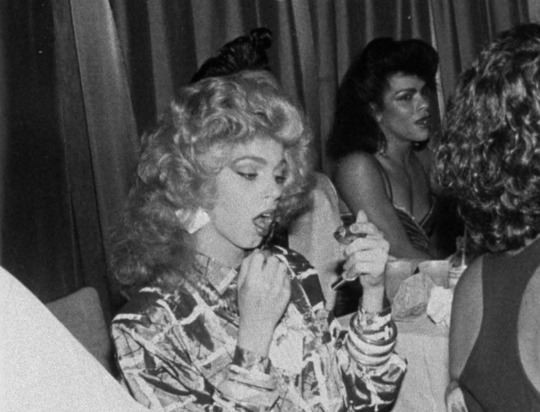
youtube
“The most profound and potentially the most radical politics come directly out of our own identity, as opposed to working to end somebody else's oppression" (Collective, 1983, p. 210). In other words, coping with oppression is inherently associated with identity politics, a deconstruction of identity and labels. What queer folks of color need are to be recognized as normal, equal, lively human beings.
Part 2: About Gender Performativity
It is undeniable that Paris is Burning is a milestone in portraying queer POCs, however, there are still some controversies. Firstly, the representation of "performance competition" still conforms to the tenet of gender performativity. To articulate that, we need to know the basic rules of competition in a given ball first. There are various "categories," or themes, for each competition, such as "Military," "School," "Executive Realness," "Butch Queen's First Time in Drag at a Ball," etc. And participants need to dress according to the guidelines of each category; for example, they wear “yacht wear," military garb, the outfits of private school kids, business attire, and extravagant dress to adhere to the rules.
Here is a clip from the documentary explaining "Categories."
youtube
Overall, we can see these queer POCs parody their heterosexual counterparts. It seems effortless for them to perform high femininity or masculinity in a world of heterosexual folks. However, these "categories" also signify that they are still in a dichotomous system and perform binary genders.
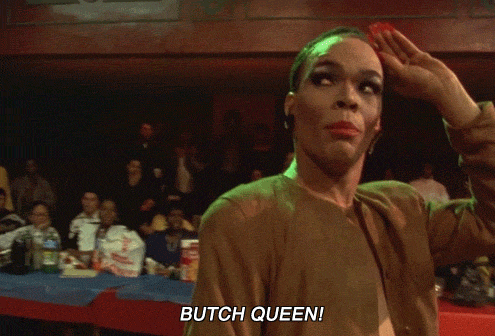

Another category called "high fashion evening wear" required participants to dress and act as an elegant, beautiful young lady wearing an evening dress. Every participant was strictly required to have a purse. "An evening bag is a must, you have to carry something; no lady is sure at night." This kind of "norm" reminds me of the gender performativity theory by Judith Butler: gender is not something we are but something we do. However, due to the reliance on norms, we "do" genders through imitative performance, ultimately leading to extended repetition. In other words, we have no authentic gender.
The voiceover of the documentary said, "The more natural you are, the more credit your outfit is given." "Give people a sense that they are not gay, like a real woman or a real man." However, what is "natural" and what is "real"? What is even a category? As Judith Butler has argued, "we cannot necessarily assume that binary biological sex everywhere provides the universal basis for the cultural categories ‘male’ and ‘female’. If gender constructs are culturally variable, then so are the categories of sexual difference" (cited in Andresson, 2002, p. 6).

Being different is not a flaw, which is the spirit of the queer community. Unfortunately, the documentary did not highlight how queer people of color get rid of the constraints of the binary system or how they go against the mainstream, which makes it less queer.
Part 3: About the Production
Much of the controversy surrounding Paris is Burning has also centered on the perceived appropriation of a black gay subculture by a privileged white queer filmmaker for profits. Jennie Livingston is an American director. She graduated from Yale University in 1983, where she studied photography, drawing, and painting with a minor in English literature. "Whiteness" and the social status of an "ivy student" are critical privileges for Livingston. What's more, she identified herself as a lesbian. It seems Linviston's queerness helps her to enter the industry and tell stories about black gays and trans people of color even though she is not a part of the Ball community.

It is not surprising that the filmmaker's white view leads to stereotypical depictions of black folks in the documentary. For example, the "Banjee" competition features impersonations of the gum-chewing, round-the-way sexy girl on welfare or the crackhead gangbanger on the block. Besides that, Dorian Corey, an experienced drag queen, said in the documentary: "Black stars are stigmatized. Nobody want to look like Lena Horn, everybody wanted to look like Marilyn Monroe." This scene amplifies the drag queen's self-hatred, solidifying the admiration for whiteness among drags. But this kind of representation is biased.
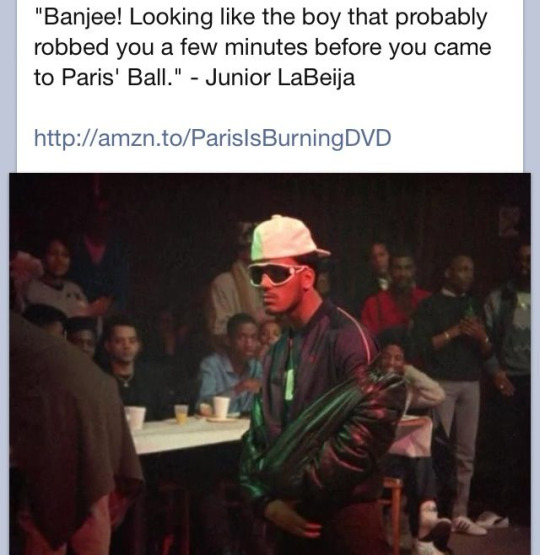
"Too often, people with resources who already have a platform become the ones to tell the stories of those at the margins rather than people who themselves belong to these communities" (Tourmaline, 2017). We need to strive for a time when queer people of color have the opportunity and capital to shoot their own stories. “Power struggles over control of one’s image and access to the tools of media production were, and still are, crucial in communities of color” (Parkerson, 2020). Although the show Pose has made some breakthroughs by hiring trans characters and trans writers, it is hard to make any substantial change in this inherently racist, heterosexual, white male-dominant industry.

Moreover, the film made 4 million dollars, yet only $55,000 was distributed among the 13 performers. Performers felt cheated and were not satisfied with their representation in the documentary. In 2014, when the documentary was to be screened at a public event hosted by Celebrate Brookly! / BRIC, a protest was raised. In such circumstances, Livingston would apologize for the cultural appropriation to her own advantage.
Here is a clip showing the life of performers after the Paris is Burning.
youtube
Final Thoughts
"Good or bad, Paris is Burning is a milestone in the gay community."
Considering my own subject positionality, as a straight, cisgender woman of color from China, I have to say that watching Paris is Burning is definitely a fascinating and eye-opening experience. Regardless of some of its biased representation, this documentary makes me take a glimpse of the Ballroom culture in NYC which has extended globally and influenced a lot of Chinese queer folks in recent years. I also get to know some drag queen shows becoming popular in underground clubs located in Shanghai and Beijing.
Meanwhile, I deeply resonate with this group of outcast New Yorkers, for whom racism, poverty, and homophobia are too real, too tough, while they create a world of sustenance and belongingness by themselves. It is all about the power they give to themselves. In the name of glory and pride, they dance, scream, suffer, survive, and most importantly, be themselves here. Ballroom culture makes them not stay in the shadow of NYC, but throw the shadow on those who demean them. All in all, Paris is Burning is the "fire this time."
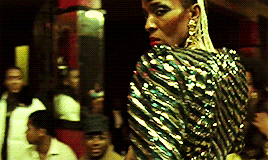
References:
Andersson, Y (2002). “Queer Media?: Or; What Has Queer Theory to do with Media Studies?” IAMCR, 1-10.
Collective, C. R. (1983). The Combahee river collective statement. Home girls: A Black feminist anthology, 1, 264-274.
Martin, A. L. (2018, August 2nd). Pose(r): Ryan Murphy, Trans and Queer of Color Labor, and the Politics of Representation. LA Review of Books. https://lareviewofbooks.org/article/poser-ryan-murphy-trans-queer-color-labor-politics-representation/
Parkerson, M. (2020, February 25th). Paris Is Burning: The Fire This Time. The Criteron Collection. https://www.criterion.com/current/posts/6832-paris-is-burning-the-fire-this-time
By Selene
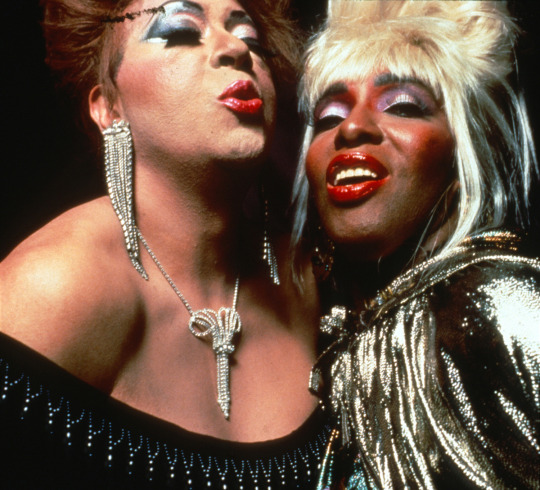
#queer media#queer film#queer studies#paris is burning#ballroom#nyc#voguing#documentary#lgbtq#lgbtq+#drag queen#Youtube#ball culture#drag#transgender#gay rights#gay movement#intersectionality#gay movie#movie review
127 notes
·
View notes